The Essence of Eastern India!!
Embark on an unforgettable journey through the cultural and natural wonders of Eastern India. From vibrant urban hubs to ancient temples and breathtaking landscapes, every destination promises a unique experience. Explore serene lakes, hill stations, and tribal heartlands, immersing yourself in the rich tapestry of traditions, history, and biodiversity. Join us as we traverse through these enchanting destinations, uncovering the essence of Eastern India.
Namaste!! - We Welcome You With Folded Hands!!
Welcome to India, or as we say ‘Atithi Devo Bhava’ (The guest is an incarnation of God). Thank you for giving us the opportunity to serve you!!
Mid – morning arrival, meeting and assistance upon arrival as our representatives welcome you and escort you to your car.
(Though check in time is 2pm, every effort would be made to ensure an as early as possible check in – subject to availability)
Whilst the room keys and check-in is organized, our representative would introduce the tour to you and hand over the documents to you.
Afternoon, we take a short ride in our car to Park Street. It is said that Park Street never sleeps and is always bustling with activities. Being a major hangout spot in the city, it has many pubs and restaurants.
Park Street is a bustling commercial area with shops, malls, restaurants, pubs, etc. Many of Kolkata's famous malls are located in or near Park Street which makes it a favourite go-to for shopaholics. Quest Mall, Metro Plaza Shopping Mall, Multi brand Shopping Mall and One Squire Mall are some of the malls where one can find a variety of local and international brands to buy for themselves or to gift their loved ones. Some of the funniest boutiques are also to be found here - especially for ethnic ladies ware. As you have your car and driver available, you can choose to also visit other shopping hub of the city.
The car and driver are available to you till 11 PM. So, you can also choose to eat out. As Park Street is one of the most commercially active regions in Kolkata, one can find a number of restaurants that serve delicious local, national and international cuisine. Some of these are extremely famous for serving authentic Bengali cuisine, while others serve a variety or fusion of cuisine coming from almost all over the world. Each restaurant has managed to create a vibe with their decor and furnishings that range from classy, glamorous, and contemporary to vintage. The Park Hotel, Charcoal Grill, Peter Cat, Over The Top, Mocambos Restaurant, Khandani Rajdhani, Tung Fong Restaurant are some of the restaurants located on Park Street.
Overnight at The Oberoi Grande, Kolkata (Luxury Room - Upgraded) (No Meals)

After breakfast, we will proceed on a special tour of Kolkata that will highlight the cultural potpourri of this city that is affectionately known as “City Of Joy”. We will start our tour with a visit to the Dalhousie Square from where once the British ruled the roost. The red building reminds us of a time of a colonial era which is very present even now. We will then visit the Mausoleum of Job Charnock situated in St. John’s Church where you will have an insight into the life & times of this Englishman. Job Charnock was widely known as the founder of Kolkata, but, the 2003 ruling of Calcutta High Court deniedhim the legacy. However, history will remember him with its own observation.
Then, we will have a Bazaar Tour where you get to feel the warmth of the people, the passion, and, the love for their city. First, we will visit the Flower Market, beneath the east end of Howrah Bridge; this is eastern India’s largest flower market with hundreds of stalls and people sitting on the ground. Then, we will visit the Burra Bazar area, which is a world in itself. The Marwaris from Rajasthan migrated here a long time ago, and, made it their home. Actually, you would notice a unique ecosystem where their business and, dwellings coexist in a colorful harmony. These unique bleeding’s have indeed contributed to Kolkata’s thrilling cultural legacy.
Following our Bazzar tour, we will be visiting the Synagogues of Kolkata including the Maghen David Synagogue. Built in 1884, Maghen David literally means the Shield of David. The entrance sees the Star of David, one of the three synagogues which have the most beautiful interiors. Marble floor, shiny chandeliers, and Belgium stained glass windows give this place its exotic look.
Later, we will also visit the St. Paul’s Cathedral, known as the first Episcopal Church of the eastern world. It is an Anglican cathedral of the Church of North India. Besides, being a religious site, the cathedral is also an architectural marvel. St. Paul‘s Cathedral is 247 feet in length, 81 feet in width and 114 feet at transept. The flagstaff rises to a height of 175 feet above groundlevel.
Next, we will be visiting the The Park Street cemetery. It is one of the first non-church cemeteries in the world. In the 19th century, it was known as the ‘Great Christian Burial ground’ in Asia. The cemetery was named after “Park Street” after the private deer park built by Sir Elijah Impey around Vansittart’s garden house. The cemetery served as a burial ground for the European expatriates who were settled in Calcutta during the colonial period. The cemetery houses the graves of many notable European figures of the regal era. Most distinguished tombs are those of ‘Rose Aymler’, beloved of the poet Walter Savage Langdor, Henry Louis Vivian Derozio, the initiator of the Young Bengal Movement who lived an eventful life for a short period of just 22 years; Charles Dickens’ son, Sir William Jones, founder of the Asiatic Society, Calcutta in 1796, David Drummond, C. F. Andrews and Michael MadhusudanDutta, the illustrious and anglicized poet of Bengal.
We will also be visiting the Victoria Memorial, the exquisite marble building of Victoria Memorial stands tall in all its glory. As beautifully it is designed as carefully it has been curated and looks picturesque during the dusk as well as in the sunrise. Also, the Victoria Memorial Hall exhibits some of the finest collections of paintings from the colonial era. From portraits of eminent colonial administrators to paintings of Indians princes and rulers, the collection exhibits a diverse range of themes and mediums.
Later, following our tour, we will also visit Mother Teresa’s 'Missionaries of Charity'. Kolkata, apart from housing several worship places, also houses the sacred sanctum of social work, called 'Missionaries of Charity'. It is essentially a Roman Catholic religious order, founded in 1950, by Mother Teresa in Kolkata (then Calcutta), which works for the poor and destitute. Started with just 12 volunteers, this order has now spread to 133 nations of the world, with about 4,500 permanent women volunteers called 'Sisters'. ‘Missionaries of Charity’ in Kolkata works for the real needy and deprived section of society. It helps the sick, orphans, lepers, AIDS victims, abandoned elderly, mentally challenged people, refugees and ex-prostitutes. The charity has 19 homes in Kolkata; each of them working for a specific cause, e.g. NirmalHriday - the home for pure heart, working for the sick, dying and destitute in the city of Kolkata. Other homes include Shanti Nagar - the city of peace, meant for leprosy patients and NirmalaShishuBhawan, meant for orphaned kids. The Missionary also works for educating the street children of Kolkata.
Overnight at The Oberoi Grand, Kolkata (Luxury Room - Upgraded) (B)
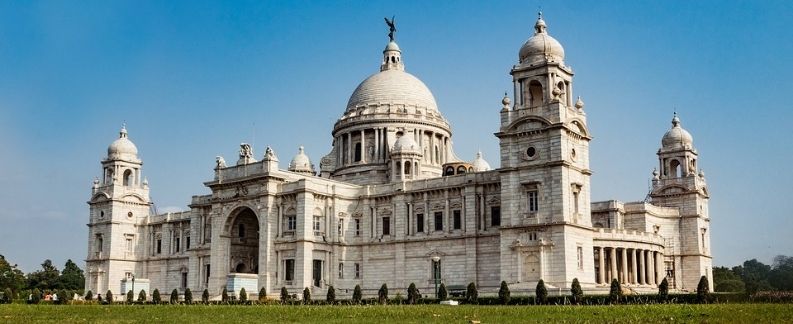
After breakfast, we will drive to Bishnupur to visit Rash Mancha, Dalmadal Cannon, Jor Bangla Temple, Madan Mohan Temple, Malla King's Fort and Jogesh Chandra Pura Kirti Bhawan Museum.
Rash Mancha (stage for dancing) - One of the famous attraction in Bishnupur which was built by Bir Hambir, a Malla King to celebrate the Ras festival.
Dalmadal Cannon - located south of the Rash Mancha. This four meters medieval artillery piece was used successfully against the repeated Maratha attacks in 1742 A.D
Jor Bangla Temple - Built by Raghunath Singha II in 1655 A.D., the temple is greatly influenced by classical Bengali architecture. The temple is also known as the Keshta Raya Temple and is famous for its construction and terracotta sculptures. The Temple resembles two hut-like structures with separate angled roofs held together by a chala (tower) at the crown.
Madan Mohan Temple – This temple is one of the largest temples in Bishnupur and consists of a square building and a domed ceiling. Constructed in in 1694 by Durjana Singh Deva in the 'ekaratna' (meaning single tower) style, Madan Mohan Temple has beautiful carvings on the walls featuring scenes from the Puranas, the Ramayana and the Mahabharata.
Malla King's Fort - Very little remains of the fort built between 1657- 1677 A.D by the Malla ruler king Bir singha. The gate of the old fort is of laterite stone and is called "PatharDurwaza" the kings soldiers would hide inside the gate and there were holes drilled in different directions for the ques. A stone chariot in laterite can be seen as cribbed to.
Jogesh Chandra Pura Kirti Bhawan Museum: In the year 1951 a group of young energetic persons established this museum and sought for affiliation from BngiyaSahityaParisad, Calcutta in order to legitimize its collection work. In 1954 they said museum was named after Acharjya Jogesh Chandra Purakriti Bhawan after the name of Jogesh Chandra Roy Vidyanidhi, the famous scholar of this district as well as Bengal. 03 Galleries are there - ARCHEOLOGICAL GALLERY, MUSIC GALLERY and FOLK ART GALLERY.
Following the excursion, we will return to our hotel in Kolkata.
Overnight at The Oberoi Grand, Kolkata (Luxury Room - Upgraded) (B)
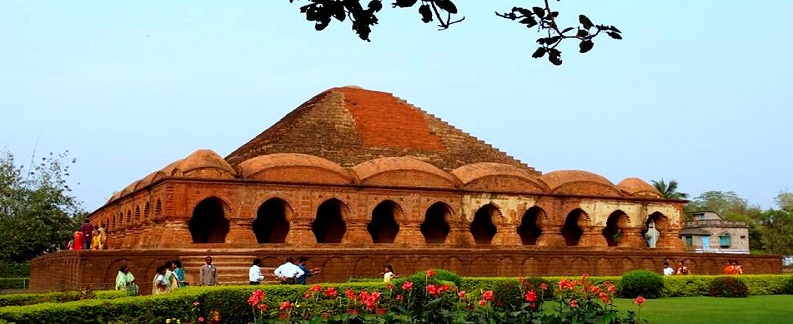
Following a leisurely breakfast, we will visit Kumartuli. This unique artisan village dates back 400 years, making it perhaps the oldest of its kind in the world. It is the lifeblood of Bengal‘s biggest festival and keeps the Puja fervor alive among Bengali communities in other countries. Around 250 artists work to produce 40,000 idols a year, including 3500 images of Durga. With more than a thousand workers assisting the artisans, Kumartuli is a mini industry. It exports 50 Durgaidolsto virtually all corners of the world, including UK, USA, Canada, Germany andSwitzerland.
We will then visit the College Street Book Market, Kolkatans are well-known for their passion for books and this area is a treasure for the book lovers of the city - you can find of them every day spending hours browsing through the loads of new books or bargaining for buying a second hand one. Some of the Kolkata‘s most renowned academic institutions like Kolkata University, Presidency College, Kolkata Medical College and Sanskrit College are also located in this street. (Closed on Sunday & National Holidays)
We will then visit the Indian Coffee house and get engaged in an informal chat session with university students. Also known as "Albert Hall", this is the most favourite gathering place for the writers, intellectuals, artists and students for many decades. Casual chatting for hours about any issue is the most favourite social activity of any Bengali and here in this large historical and legendary café, entire day you can find hundreds of Kolkatan's are busy discussing about their favourite issue over a cup of coffee.
(Though the checkout time is 12 noon, every effort would be made to retain rooms till as late as possible without additional charges - subject to availability)
Following the tour, transfer to Kolkata airport to board the flight to Bhubaneshwar.
Meeting and assistance upon arrival, as our representative will welcome you and transfer to Welcomhotel By ITC Hotels.
Overnight at Welcomhotel By ITC Hotels, Bhubaneshwar (Deluxe Room) (B)

After breakfast, we will proceed to visit the ancient rock edict of Emperor Ashoka, Hirapur 64 Yogini temple and the Jain caves of Khandagiri – Udaigiri.
Dhauli – Ashoka(reign ca. 272-231 BC) was the most illustrious king of the Maurya dynasty. After his conquest of the kingdom of Kalinga in modern day Odisha, struck with remorse at the suffering he caused, Ashoka converted to Buddhism and spent the rest of his life propagating his dharma (law). In order to achieve this, he had numerous edicts inscribed on rocks, pillars and caves, throughout his vast empire. These are written in various vernaculars and represent the earliest written document from the Indic regions. From these edicts it would appear clear that Ashoka was an extremely tolerant and benevolent monarch.
Near Dhauli, south of Bhubaneshwar, there is a rock inscribed with the edicts of the emperor Ashoka. The front of the rock is sculpted as the head, trunk and front legs of an elephant.
The Shanti Stupa at Dhauli Hills is a significant symbol of love and peace. The pilgrimage is significant because here King Ashoka resigned from violent wars. After witnessing the devastating sight of blood filled land and the Daya River that obtained red color because of the merciless slaughter of around 1,50, 000 warriors, King Ashoka was filled with sheer grief and therefore decided to renounce wars completely all through the rest of his life. It is at Dhauli that Ashoka resorted to Buddhism and presented his sword in front of Lord Buddha.
Hirapur 64 Yogini Temple – Hirapur – Onthe outskirts of Bhubaneswar, 15 km south-east of the city, is a small, circular temple, the Yogini Temple, dating to the early ninth century. It is hypaethral (open to the sky), and belongs to a genre of architecture completely apart from the major Odishan school. Although it seems that temples of this type existed throughout India at one time, today only four remain. Two of them are in Odisha; the shrine at Hirapur, and one in the far western reaches of the state, at Ranipur-Jharial.
Afternoon, we will visit the ancient caves of Khandagiri and Udaygiri which were carved and tunneled, to create this multi-storied ancient apartment residence for Jain monks. They were the work of the first known Odishan ruler, King Kharavela, and probably begun in the first century BC. Kharavela was a king of the Mahameghavahana dynasty, who is known for expansion of the Kalingaempire and his installation of public improvements, such as canal systems. His queen was evidently quite a patron of the arts, and probably had much to do with the impressive sculptural decoration of the caves.
Overnight at Welcomhotel By ITC Hotels, Bhubaneshwar (Deluxe Room) (B)

After breakfast, we will proceed to visit Pipli and Konark.
We will first visit the village of Pipli which has the monopoly on appliqué, and other craft rooted in the Jagannath cult. Geometric motifs and stylized birds, animals and flowers are cut from brightly coloured cloth and sewn onto black backgrounds. Pipli artists are responsible for the chariot covers used in the RathYatra (The famous Car Festival of Odisha) as well as for the small canopies, or chhatris, suspended above the presiding deity in Odishan temples.
Next, we proceed to visit the famous Sun Temple at Konarak.
The grandest of Orissa’s temples is Konark Sun Temple. The UNESCO World Heritage Site is 66 km (41 miles) from Bhubaneswar and best visited en route to the nearby town Puri, on the east coast. Set on a tree- lined lawn, the temple represents a chariot of the sun god, complete with 24 carved wheels. Every visible surface is sculpted, telling a complex narrative of the religious, political and social life of the people who lived in 13th-century Orissa. The craftsmanship of the temple is so impressive — the usually reserved UNESCO board called it ‘a masterpiece of creative genius’— that stories of its master builder, BisuMoharana have gone down in local legend. Also, visit the local Fishermans village and interact with the local community.
Later, we will proceed to Puri.
As the home of Lord Jagannath and his siblings, Puri ranks among Hindu India’s most important sacred sites, visited by a vast number of pilgrims each year. The crowds peak during the monsoons for RathYatra, the famous “Car Festival”, when millions pour in to watch three giant, multicoloured chariots being drawn up the main thoroughfare. At the centre of the maelstrom, the Jagannath temple soars above the town’s medieval heart and colonial suburbs. Non- Hindus and Foreign Nationals aren’t allowed inside the temple, but don’t let this deter you; Puri’s streets and beach remain the focus of intense devotional activity year round, while its bazaars are crammed with collectable souvenirs associated with Indian Mythology.
Following the tour, we will check in to, Pride Ananya Resort.
Overnight at Pride Ananya Resort, Puri (Deluxe Room) (B)

After breakfast, we will drive to Daringbadi en route visiting Chilika Lake (Mangalajodi community village)
Avast lake along the eastern cost of Odisha with beautiful islands, migratory birdses wading in the shallow waters and the air echoing with the chirping of birds from as far as the Caspian Sea, Aral Sea and other parts of Mongolia, Central and South-East Asia, that’s the breath-taking beauty of Chilika-Asia’s largest brackish water estuarine lake.
Chilika sprawls over an area of 1100 sq.km covering parts of three districts of Odisha i.e. Puri on the east, Khurdha on the North and Ganjam on the South. It’s a haven for bird-watchers / nature lovers. Abounding in unique flora and fauna, Chilika supports the livelihood of more than hundred thousand families living in and around it. Winter is the best time to visit Chilika as over 160 species of migratory birds flock the islands during this time of the year.
A community owned and managed wildlife conservation venture, Mangalajodi Ecotourism is your destination to get a peep into Mother Nature. Mangalajodi is a village located on the northern banks of Chilika Lake in Odisha, ‘The Bird’s Paradise’ hosts more than 3,00,000 birds in its marshy waters, especially in winters. Mangalajodi also represents one of its kind ecosystems, whose protection is epitomized by a sustainable lifestyle that is at a brink of extinction in urban settings.
Later, we will enjoya country boat ride at Mangalajodi. Also visit the Mangalajodi village and interact with the fishing families.
Following, we will continue our drive to Daringbadi enroute visiting traditional farming village.
We arrive in the evening and check into hotel, Snow View
Overnight at Snow View (Presidential Suite – Upgraded) (B, L & D)
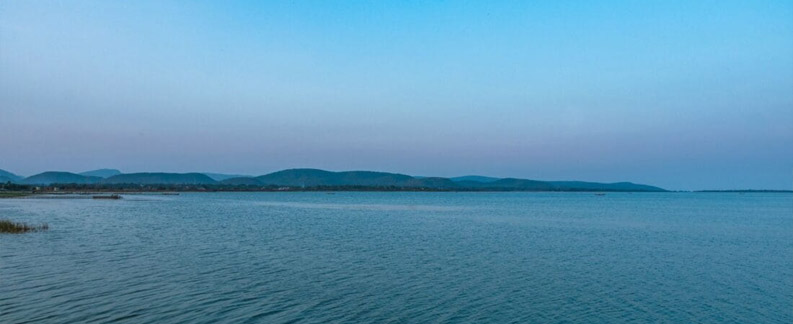
After breakfast, we will drive to Rayagada enroute visiting KutiaKondh Tribe &Tuesday weekly tribal market and their local village.
The Kondhs are one of the well known tribes of Odisha who were famous in history for their Meriah–Human Sacrifice.They are found almost in all the districts of Orissa but mostly concentrated in large numbers in Phulbani,Koraput and Ganjamdistricts.Kondh’s life is full of festivities.The important festivals are at the time of sowing and harvesting. During festivals,feast is accompanied by singing,dancing and drinking.At the time of sowing seeds they worship DharaniDeota and make animal sacrifice to ensure good crop. The village women sing and dance joining hands and the boys standing around also sing and the entire atmosphere becomes joyous. During Sarupenufestival they resort to worship on the hills and enjoy the day with feasting and dancing. Their weapon is bow and arrow by which they defend themselves from wild animals.
Following, we will continue our drive to Rayada.
We arrive in the evening and check into Hotel Sai International or Similar.
Rayagada is a district of meadows, forests, waterfalls and terraced valleys, thickly inhabited by colorful ethnic and tribal groups. The scenic beauty and heritage on the land is an unexplored paradise. The systematic relationship between men and nature is a feast to the eyes of an outsider.
Overnight at Hotel Sai International or Similar (B, L & D)
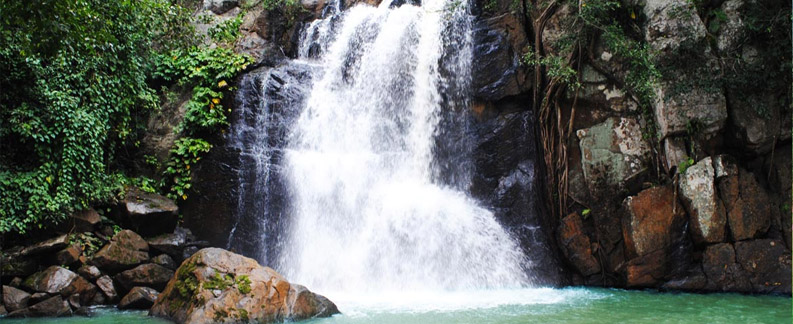
After breakfast, we will visit the weekly Wednesday market of the Dongriya Kondhas at Chatikona. Here the DongariyaKondhas trek down from their villages up the Hill with forest produce to sell or barter with non-tribals. DongariyaKondhas are one of the original ethnic tribal groups of Orissa who have retained their culture and tradition till date. The Dongria family is often nuclear, although extended families are found. Female family members are considered assets because of their contribution inside and outside the household and women are on equal footing with the male members in constructing a house to cultivation. Women do all the work for household ranging from fetching water from the distant streams, cooking, serving food to each member of the household to cultivating, harvesting and marketing of produce in the market. Due to this, the bride price is paid to her parents when she gets married which is a striking feature of the Dongrias.
After lunch, we will drive to Jeypore en route visiting Desia Kondh tribe and village.
Upon arrival check into hotel Balkrishan or Similar
Overnight at Hotel Balakrishan or similar (B, L & D)
After breakfast, we will visit the weekly Thursday market of the Bondas at Onkudelli and also spend some time at the nearby Duduma waterfall and enjoy the spectacular view of the mountains and valleys close to the nature.
Nature has showered its bounty on the undivided Koraput district replete with meadows, forests, waterfalls, terraced valleys and darting springs. This land of abundance is home to Odisha's vast tribal population. A real paradise for the nature-lover, Jeypore offers an additional benefit to the visitor of first hand meeting with its ancient civilization.
Next, we will visit the home of the approximately 6000 members of the famed Bonda Tribes–one of the most fascinating tribes of the Country. They live in the remote hills and keep themselves isolated. They grow rice by shifting cultivation and keep domesticated cows and goats. They can only be seen when they come to trade at the local weekly Thursday market. The Bonda women are noticeable by the chunks of beaded necklaces that cover their upper body, striking brass and silver necklace and their shaved heads decorated with colorful beads.
In Bonda society, the women enjoy a privileged position. They are the primary workers and providers of food for the community. Bonda girls largely marry boys who are at least five to ten years younger than them. Thus the girl looks after her husband as he grows up and in turn he cares for his elder wife. In contrast with many other populations in India, the number of women among the Bondas greatly exceeds the number of men.
Later, we will visit another ethnic tribal group of the Gadabbas. Both men and women tie their long hairs with linseed oil and decorate it with forestry flowers and different ornaments. The women wear a long strip of cloth tied around the waist and a second piece of cloth is worn across the breasts and tied over one shoulder.
Overnight at Hotel Balakrishan or similar (B, L & D)
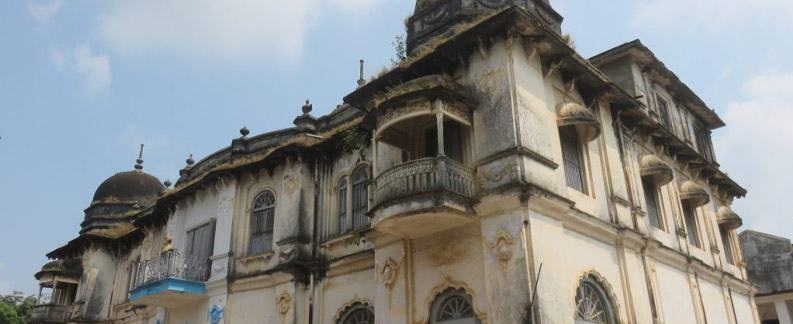
After breakfast, we will visit another interesting Paraja tribe assembles at Kunduli every Friday and the Korpaut temple. The Parajas are divided into different sub-groups viz., Sodia, Jadia and Parenga; each of them seems to be a separate ethnic group. The Parajas have a number of totemisticsepts like Bagh-tiger, Bokda-goat, Netam-Dog, Pandki-Dove, and the like, and harming or eating the totem animal is forbidden. Instead such animals should be respected. They also worship various gods and goddesses residing in hills or forests.
Following, we will drive to Vishakapatnam en route visiting typical Andhra village and temples
As you drive past the last scenic stretch of Odisha you subconsciously dwell and try to ascertain the life of a tribal who in spite of being diametrically opposite to the urban man is more adept in upholding the ethos of society by protecting Mother Nature and its bounty. The sheer prominence of women and the tremendous respect they garner in their community is a right they are entitled to and not one to be struggled for as in the Cosmopolis city.
Simhachalam Temple– Thehill of the lion is located at a distance of 18 km from Vishakapatanam refers to the 11th century temple of Lord Narasimha - an incarnation of Vishnu. Millions of devotees from round the world visit this temple every year. The presiding deity here is Varaha Lakshminarasimha, combining the iconographic features of Varaha and Narasimha. The image resembles a Shivalingam covered with sandal paste. It is only once a year, during the ChandanaVisarjana that the sandal paste is removed, and the image is seen by pilgrims. The artwork here has elements of similarity with that of Konark. Elephants, flowers and plants are portrayed in plenty. The outer walls of the sanctum depict images of a royal personality (said to be King Narasimha) in various postures. The Kalyana Mandapa within the temple has 16 pillars with bas relief depicting the incarnations of Vishnu.
Following our visit, we will continue our drive to Vishakhapatnam.
Upon arrival, check into hotel, WelcomhotelBy ITC Hotels, Devee Grand Bay.
Overnight at WelcomhotelBy ITC Hotels, Devee Grand Bay, Vishakhapatnam (Deluxe Room) (B)

After a leisurely breakfast, we will transfer to the Vishakhapatnam airport to board your flight to Coimbatore via Chennai.
Upon arrival at the Coimbatore airport, our representative will welcome you and from here, we will drive and check into the Kairali – The Ayurvedic Healing Village.
Overnight at Kairali – The Ayurvedic Healing Village (Deluxe Villa) (B & D)
Involve yourself in the Ayurvedic schedule of the resort as below:-
06:30 am to 07:30 am – Yoga Session
08:00 am to 09:00 am – Breakfast
09:00 am to 01:00 pm – 1st treatment of the Day for 1 hour
01:00 pm to 02:30 pm – Lunch
03:00 pm to 06:00 pm – 2nd treatment of the Day for 1 hour
06:30 pm to 07:30 pm – Meditation Session
07:30 pm to 09:00 pm – Dinner
Overnight at Kairali – The Ayurvedic Healing Village (Deluxe Villa) (B, L & D)
Following a leisurely breakfast, we will drive to the Coimbatore airport to board the flight to Delhi.
Meeting and assistance upon arrival in Delhi and transfer to the international airport to board your onward flight back home.
NO HOTEL QUOTED FOR THIS DAY (B)

END OF SERVICES
We do hope the flavor of India will remain on your taste buds for all times to come and hopefully would kindle an indelible fondness for the country and her people; Thank you for being our guest, and as we say in India
‘Please come back soon”
Thank you for giving us the opportunity to serve you!!
Copyright © 2016 - 2023, Trinetra Tours Pvt Ltd. Powered By DigiLantern

